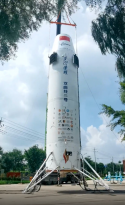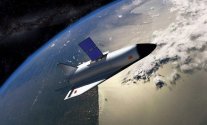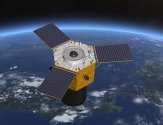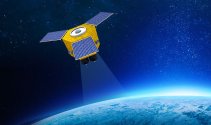I know this 70t LEO configuration, it was just that I didn't think of the purpose of having a reusable rocket in this payload range, in the same line of not seeing the need for Falcon Heavy.Here is a copy of the table depicting the two stage 70t LEO (69t LEO technically, nice) configuration from a few years ago, just for the sake of archive/record keeping:
View attachment 96179
You are using an out of date browser. It may not display this or other websites correctly.
You should upgrade or use an alternative browser.
You should upgrade or use an alternative browser.
China's Space Program News Thread
- Thread starter crazyinsane105
- Start date
- Status
- Not open for further replies.
I know this 70t LEO configuration, it was just that I didn't think of the purpose of having a reusable rocket in this payload range, in the same line of not seeing the need for Falcon Heavy.
Ah I see, fair enough.
I suppose it's partly a matter of requirements.
I unironically think that there is a geopolitcal future that may emerge by 2-3 decades time, whereby the high ground of warfare will be in space, and the few leading nations will need to annually launch enough satellites that collectively weigh a supercarrier's equivalent tonnage into LEO, just to maintain competitiveness with each other.
Doing 50t LEO reusable is a start, but 100t, 150t or 200t would be even better.
1. Never heard of by now. At least the CSS phase II does not have a rotating main structure.I have some questions about the Chinese space program, I've found it very difficult to find information on the PRC space program in English through my usual sources, any recommendations for English language sources appreciated.
1. Does the PRC have any technology demonstrators or space stations planned that use rotation for artificial gravity?
2. Does the PRC have any tech demonstrators, private companies, official plans etc for exploring asteroid mining? I read a while ago that the PRC had a long term goal of "economic development of cislunar space", and I'm curious as to whether that specifically excludes asteroid mining or whether it's part of that plan.
3. Is the PRC working on reusable orbital launch systems of some kind? Whether tail-landing like SpaceX, or some other system. I imagine development costs on a similar system would be significantly lower than the estimated $1Bn it cost SpaceX now that the PRC has seen it can definitely be done and knows at least the basic principles of how they do it. I have to imagine Chinese rocket scientists are also able to glean a lot from the huge amount of open source information there is on some SpaceX systems, so it would be surprising to me if this wasn't a capability CNSA or a private space company was pursuing.
2. Not by now. Most of the private ventured companies are busy testibg their first rockets in the recent several years. It's tough to survive.
3. Yes. CZ-8 had been testing technologies for reusable first stage (details unknown). i-Space just finished its Hyperbola-2 rocket's whole rocket crash-landing test successfully.
近日,双曲线二号验证火箭全箭落震试验取得圆满成功。试验验证了箭上各系统承载着陆冲击载荷的能力,验证了着陆缓冲过程中弹性和阻尼特性与仿真预示的一致性,验证了火箭起飞、下降、着陆判据及判别功能实现的正确性。全箭落震试验的圆满成功,标志着星际荣耀在可重复使用运载火箭研制领域再次取得重大突破,为后续的可重复使用飞行试验奠定了坚实基础。

Speaking of reusable tech, this just happened:

CASC says they've successfully completed a test flight of suborbital craft.

CASC says they've successfully completed a test flight of suborbital craft.
Sounds like another test flight of that VTHL craft. After being checked out it took off again from JSLC, made an suborbital flight and then successfully landed horizontally at Alxa Right Banner airfield, thus making the first time a Chinese suborbital craft made repeated flight.飞行试验采用的运载器,经健康检测维护后,在酒泉卫星发射中心再次点火垂直起飞,按照设定程序完成亚轨道飞行,平稳水平着陆于阿拉善右旗机场,成功实现我国亚轨道运载器的首次重复使用飞行。本次飞行试验的圆满成功,有力推动了我国航天运输技术由一次性使用向重复使用的跨越式发展。
Last edited:
Today China Aerospace Science and Technology Corporation (CASC) announced that its reusable lifter vehicle just successfully finished a reused VLHL suborbital flight test.8月26日,由中国航天科技集团有限公司一院自主研制的升力式亚轨道运载器重复使用飞行试验获得圆满成功。
飞行试验采用的运载器,经健康检测维护后,在酒泉卫星发射中心再次点火垂直起飞,按照设定程序完成亚轨道飞行,平稳水平着陆于阿拉善右旗机场,成功实现我国亚轨道运载器的首次重复使用飞行。本次飞行试验的圆满成功,有力推动了我国航天运输技术由一次性使用向重复使用的跨越式发展。
The vehicle, which has been launched and recovered before, was vertically launched from Jiuquan Satellites Launch Center and after a programmed suborbital flight it was landed horizontally at Alxa Right Banner Airport about 200 km away.
It's the first time successful test from China.
An imaginary CG:Today China Aerospace Science and Technology Corporation (CASC) announced that its reusable lifter vehicle just successfully finished a reused VLHL suborbital flight test.
The vehicle, which has been launched and recovered before, was vertically launched from Jiuquan Satellites Launch Center and after a programmed suborbital flight it was landed horizontally at Alxa Right Banner Airport about 200 km away.
It's the first time successful test from China.

An imaginary CG:
View attachment 96185
This is an orbital space plane, not the suborbital launch vehicle mentioned in the article.
escobar
Brigadier
BJ-3B bigger than BJ-3A and use different optoelectronic systems (one camera vs two camera) called "Tianshu" and "Tianqing".China launched Beijing-3B satellite by CZ-2D rocket from Taiyuan Satellites Launch Center at 11:01, August 24 UTC+8. Beijing-3B is a resource survey satellite mainly providing telemetry data services for land resources management, agricultural resources investigation, ecological environment monitoring and urban comprehensive application.
This is the 434th launch mission of CZ series satelites.
View attachment 96057
View attachment 96058
View attachment 96059
View attachment 96060
View attachment 96061
The Tianshu camera has the following main features compared to the Tianqing:
- Large aperture and correspondingly brighter field of view;
- Increased focal length;
- Low-noise CMOS sensor as the main panchromatic image receiver, applicable for both frame shooting and video, with a wider spectrum bandwidth;
- A line of Chinese CMOS-matrices with temporary charge accumulation for obtaining multispectral images;
- Own high-performance processor, providing optimal shooting parameters and various image reading modes, with the possibility of self-correction and parameter recording;
- Twice the flow of digital information;
- Automatic focusing on objects located at different distances from the spacecraft;
- Active camera stabilization during operation;
- Vertical adjustment of the optical system


I agree with you. This is why I think the EU's space based solar power project actually does make sense, even though it's inefficient and non-viable economically. The process of reorienting industry to put that much mass in orbit and gaining technical and industrial skills for manufacture of large and energy intensive installations in space has the potential to give the EU a first mover advantage in terms of serious, industrially relevant investment in space. In my opinion, there is no other feasible path for the EU to geopolitical contention in the future that I can see. The US has too much influence on them to allow them their own military that's effective enough to say "Thanks but no thanks, we can handle our own defence" to the US military, Russia may be a threat they still need to think about for the foreseeable future, and I think it's unlikely they'll ever be able to contest China (plus the most likely way they would do so is as a junior partner to the US, preventing them from developing seriously as a superpower).Ah I see, fair enough.
I suppose it's partly a matter of requirements.
I unironically think that there is a geopolitcal future that may emerge by 2-3 decades time, whereby the high ground of warfare will be in space, and the few leading nations will need to annually launch enough satellites that collectively weigh a supercarrier's equivalent tonnage into LEO, just to maintain competitiveness with each other.
Doing 50t LEO reusable is a start, but 100t, 150t or 200t would be even better.
I think the next most likely path for them is coming into serious conflict with China where both of them want African resources, and having a significant chance to win against China because they have a lot more history with colonial administration and a lot more ability to exert control in Africa than China does. If they can win against China in Africa and thereby solidify their hold on African natural resources while spooking their militaries enough to whip them into shape (and ideally into a single force), I could see that prompting a serious return of the EU. The reason I still don't think it's possible is that I don't see the US letting Europe run the show there, even in a world post Taiwan reunification where the US has mostly given up on westpac. That's why I think their only feasible path to superpower status is by acting first on space and trying to achieve dominance there as quickly as possible. I still have doubts they'll be able to do it, but it's the only path I see for them.
I know this 70t LEO configuration, it was just that I didn't think of the purpose of having a reusable rocket in this payload range, in the same line of not seeing the need for Falcon Heavy.
There was an announcement of a broadband constellation with 13000 satellites recently.
If each satellite is equivalent to a Starlink at 300kg, that is 3900 tonnes of satellites.
That would need 56 launches of this 70t LEO reusable rocket configuration
- Status
- Not open for further replies.
